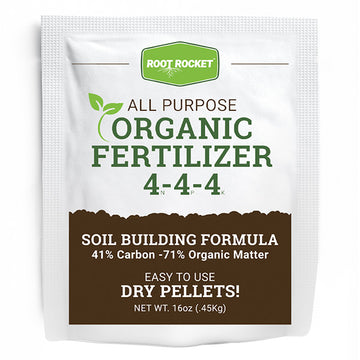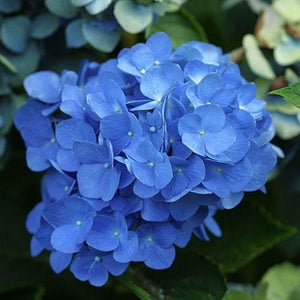There are several hydrangea types with variations in size, look, color, and more. Why bother to understand the different hydrangea types? Knowing your hydrangea type can help you better understand where to place your hydrangea in the landscape and how to care for it properly.
What is the Most Common Type of Hydrangea?
Hydrangeas grow throughout most of the United States. They’re beautiful plants, fairly hardy, and easy to maintain once they’re established.
The most common type of hydrangea in the U.S. is the bigleaf hydrangea. Its other names include hydrangea macrophylla, the French hydrangea, the florist’s hydrangea, and hortensia. Bigleaf hydrangeas can grow practically anywhere and they bloom for several months–from June to October. Another reason they’re desirable is that the same variety of plants can have anything from white to blue to red flowers, depending on the soil it’s grown in.
As a result of its popularity, flower breeders have created new varieties of hydrangea, for cold hardiness, color, etc. Hydrangeas make a bright and easily maintainable addition to any garden or landscape.
How Many Different Varieties of Hydrangeas are There?
There are several varieties of hydrangea. North America has six common types of hydrangeas, and each of these common types has varieties within them with different colorations and hardiness. There are plenty of types of hydrangeas to choose from for your landscape.
The Six Types of Hydrangeas are:
- Big leaf hydrangeas- These hydrangeas grow best in zones five to eleven with a full height of six to ten feet and a spread about the same. They like partial to full shade and they’ll only do well in full sun with moist soil. They come in white, pink, blue, or red–higher acid in the soil tends to bring out the blue color, while higher alkaline turns them pinker. They bloom from June to October.
- Smooth hydrangeas- These smaller plants prefer zones three to nine and grow three to five feet tall and spread three to five feet around. They generally come in white or pink, and they have a flowering season from June to September. Prune them close to the ground every other year in late winter to encourage new growth.
- Panicle hydrangeas- Growing in zones three to eight, these hydrangeas produce large white flowers. They can reach eight to fifteen feet tall and bush out six to twelve feet around. They’re happy in full sun or part shade, and they’ll flower from July to September. Prune as needed.
- Oakleaf hydrangeas- Thriving best in zones five to nine, these hydrangeas can get six to eight feet tall and grow the same amount around. They like full sun or partial shade. White to purple or pink flowers bloom from July until September. Their flowers will turn more purple if the acidic soil PH is at 5.5 or below.
- Climbing hydrangeas- While you can grow climbing hydrangeas in zones four to eight, they generally don’t thrive in zone seven. Since they’re climbing plants, they can reach thirty or forty feet tall as long as the surface they grow on supports that height. Additionally, they can grow five or six feet wide. These white flowering vines prefer part to full shade. They’ll bloom from May to July.
- Mountain hydrangeas- These hydrangea thrive best in zones six to nine. They only grow to about two to four feet tall and the same amount wide. Mountain hydrangeas prefer partial shade. Pink or blue flowers bloom from June until August. Soil acidity will affect how blue their flowers get. Acid soil at PH 5.5 or below will produce blue flowers. Higher alkaline soil turns them pink.
From these six varieties, plant breeders have created various exciting offshoots. Read on for a more detailed breakdown. We will help you understand your options when it comes to picking what hydrangea types you may have in your landscape. Browse our large selection of hydrangeas for sale.
How Do I Know What Kind of Hydrangea to Grow?
When planning your landscape, you’ll need to decide what type of plants to include. When it comes to hydrangeas, you’ll need to ask yourself, “How do I know what kind of hydrangea to grow?” Any plant represents a lengthy investment of time and space, and so this should be thought through carefully.
There are several objective factors in plant selection:
- Zone- You’ll need to learn your growing zone to know which plants will thrive in your area. Determine what hardiness zone your city is in. View hardiness growing zones here. Hydrangeas grow in several zones, but different types of hydrangeas do better in certain growing zones. So, be sure the type of hydrangea you are choosing matches your zone.
- Space- How big do hydrangeas get? This can vary significantly. Some hydrangeas (we’re looking at you, panicles) can grow very large. While others stay fairly petite. Be realistic about the space where you want to plant.
- Sun vs. Shade- Check the spot where you intend to plant several times throughout the day to figure out how much sun and shade it gets. Some hydrangeas don’t like full sun, while others thrive in it. Be kind to your plants. You don’t want them getting sunburned.
- Color- Since different hydrangea types come in a range of colors, you have several options. If you want specific colors, it is possible to influence the color of some varieties of hydrangea by adjusting soil acidity levels. Higher alkaline soil can turn mophead hydrangeas pinker, while higher acid soil turns them bluer.
If, on the other hand, you just want to know what is the easiest hydrangea to grow, you’re probably safe with either Big Leaf (French) hydrangeas or Smooth Hydrangeas, sometimes called Snowball Bushes. Both of these will do well with minimal attention once they’ve been well-established.
Those are the broad considerations when it comes to hydrangeas. We’ve included detailed information about specific types of hydrangeas below to help you make a choice for bringing these beautiful flowers into your landscape.
Hydrangea Types

Big Leaf, Mophead, Lacecap Hydrangeas (H. macrophylla)
Mophead hydrangea flowers have rounded, lush heads while lacecap hydrangea flowers have tiny flower buds in the center surrounded by a crown of showy flowers. Hydrangea macrophylla plants have heart-shaped, thick, shiny leaves with serrated edges. This foliage is significantly more textured than a smooth hydrangea. Big leaf hydrangeas bloom on old wood and tend to prefer warmer climates and some shade. Although newer varieties like Cityline® can grow in full sun.
Examples: Cityline® Mars, Cityline® Paris Bigleaf, Cityline® Rio, Cityline® Venice, Glowing Embers, Nikko Blue

Oakleaf Hydrangea (H. quercifolia)
Oakleaf Hydrangea bushes have woody stems and leaves shaped like an oak leaf. Cone-shaped flower heads are another feature of this group. Oakleaf hydrangeas bloom on old wood and are extremely adaptable, but prefer warmer climates. These hydrangeas grow well in sun or shade and are more drought tolerant than other hydrangeas. Bloom color is not affected by pH.
Examples: Alice Oakleaf Hydrangea, Ruby Slippers Oakleaf Hydrangea

Smooth Hydrangeas (H. arborescens)
Smooth hydrangeas have heart-shaped leaves like Hydrangea macrophylla but they are thinner, matte-looking, and not as crisp as those of the previous group. The flowers of smooth hydrangeas are large and round and are green when they first open. Most turn white and remain that way for 2 to 3 weeks before fading back to green. These are generally white hydrangeas, but there are new cultivars that offer bold color with no soil pH adjustment needed! Smooth hydrangea blooms stay the same color despite your soil pH and grow on new wood.
Examples: Annabelle, Incrediball®, Invincibelle® Ruby

Panicle Hydrangeas (H. paniculata)
This type of hydrangea has long cone-shaped flowers with elongated stems. The foliage of hydrangea paniculata is similar to smooth hydrangeas. Soil acidity or alkalinity will not affect the flower color of panicle hydrangea. These hydrangea bushes love the sun, but don’t mind some shade. Their flowers grow on new wood.
Examples: Bobo, Fire Light®, Limelight, Little Lime®, Pinky Winky®, Strawberry Sundae®, Vanilla Strawberry®

Reblooming Hydrangeas (H. macrophylla)
These new cultivars of Hydrangea macrophylla bloom on both new and old wood. These bushes look very similar to older lacecap and mopheap hydrangeas (as described above) but they are rebloomers that often flower in spring, summer, and fall.
Examples: BloomStruck®, Blushing Bride®, Endless Summer®, L.A. Dreamin'®, Let's Dance® Big Easy®, Let's Dance® Rave®, Let's Dance® Rhythmic Blue®, Penny Mac, Pistachio, Twist-n-Shout®
Where to Plant a Hydrangea
To help your hydrangeas thrive, you’ll need to determine where the best place to plant is located in your landscape. Find a location that receives morning sun and afternoon shade. If in the northern United States, hydrangeas will tolerate sun all day. You’ll need to space hydrangeas apart enough to allow full growth. Make sure that the soil is not too dry or too soggy and water accordingly. Check the pH of the soil if you are wanting to influence the color.
How to Make Hydrangeas Bloom
Hydrangeas are gorgeous when their blossoms bloom. However, there are a few things that can deter flowers from blooming. Here are a few ways to encourage your hydrangeas to bloom:
- Use a slow-release fertilizer. If hydrangeas are over-fertilized with too much nitrogen they may not bloom. Opt for a slow-release fertilizer instead.
- Keep the soil moist but not soggy. Use mulch to help lock in moisture but be sure not to overwater.
- Prune with care. Some types of hydrangea allow heavy pruning while others do not. Prune at the end of summer or just after the flowers fade. Most hydrangeas will do well with deadheading only.
Learn more about hydrangea care here.
With so many hydrangea types to choose from, you’re sure to find the perfect fit for your garden or landscape. Order from our online nursery and have them delivered to your doorstep. Look for other types of hydrangea such as Hydrangea Trees or the White Climbing Hydrangea Vine.


